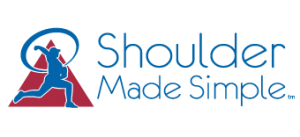The Good & Bad of Barefoot Running & Minimalist Footwear
By: Dale J. Buchberger, PT, DC, CSCS, DACBSP
The topic of barefoot running is one that will draw mixed opinions not only from health care professionals but also track and field coaches. This is not the first time the concept of barefoot running has been brought to our attention. This seems to happen nearly once a decade. When Abebe Bikila won the 1960 Olympic marathon in bare feet the concept was prominent. In the 70’s “earth shoes” came out. In the 80’s it was South African barefoot runner Zola Budd. Recently you may have seen some people wearing odd-looking footwear with “toes” instead of the closed toe box of conventional footwear. These are Vibram Five Fingers shoes also known as “minimalist” shoes. This has given the barefoot craze some momentum.
For starters they are more comfortable and appealing then, their hideous looking predecessors, the “earth shoes”. So the question remains is barefoot running good or bad? The idea of barefoot running has been studied for many years, but much of the mainstream popularity was created by the bestseller, Born to Run, by Christopher McDougall. After living with and observing a tribe of well trained humans in Mexico McDougall proposed that everyone should be running barefoot because this improves your gait cycle and promotes a more efficient gait. When looking at McDougall’s ideas they are not so much about shoes as they are about learning to run efficiently. It just so happened that running barefoot was a short cut to learning how to run efficiently. Next question: Why does barefoot running create efficiency?
Barefoot running forces the individual to land on their mid and forefoot rather then on their heel and rear foot (as most traditional running shoes now promote). Running with a “heel strike” increases forces through the lower extremities and into the spine. Landing on the forefoot or “barefoot strike” reduces the forces through the lower extremity and spine at impact. This creates a smoother transition to the next cycle as the other leg comes through and prepares to hit the ground. Therefore instead of pounding the ground and springing forward the individual glides over the terrain. The beginning of the “running craze” of the ‘70’s that began with the “rock star” approach of Steve Prefontaine; the gold medal performance of Frank Shorter and publishing of “Running” by Jim Fix also began with “minimalist shoes”. Only we didn’t call them “minimalist shoes” because they are all we had! Nike’s original models such as the Oregon Waffle and the Waffle Trainer did what they were supposed to do. Keep you from cutting your foot on man made surfaces and provide a shield from the elements. Once shoes became “corrective devices” all heck broke loose creating a magnification of running injuries and the idea that running was “bad for you”. In reality running is not bad but rather running bad is bad. Our old “minimalist shoes” forced us to run correctly or not run at all. The new breed of athletic shoes has allowed an entire generation of inefficient runners to hit the streets and literally “pounding the pavement”.
The most popular minimalist shoes are the Vibram Five Fingers, New Balance Minimalist and the Nike Free Run. The idea goes back to Nikes original designs: provide protection to the foot, but allow you to run with barefoot mechanics. They are lightweight, flexible, have a wide toe box (front of the shoe), and what is known as a ‘zero-drop sole’. This means the heel of the shoe is the same thickness of the rest of the sole. This is contrary to conventional running shoes that are built with a dramatic heel lift. It is actually the heel lift of modern day shoes that creates a good portion of running related injuries by creating imbalances of strength, weakness and stiffness in the lower extremities.
If you want to try minimalist shoes there are a few simple rules to follow. First, be realistic with your expectations. Minimalist shoes will not fix your injuries and you will most likely go through a period of soreness in the legs and back. Do not expect to train at your normal volume or intensity for several weeks to months. Make sure that you are injury free. Start by wearing your new shoes for daily activities and progress to running. Make sure you are regularly stretching your calves and plantar fascia (bottom of the foot). Like it or not age is a large determiner in being able to wear minimalist shoes. The older you are the longer it takes to adapt to the minimalist approach. You may have also developed certain maladies that will prevent the use of these shoes. If you have any questions start by asking your health professional or try this online resource: http://www.runnersworld.com/article/0,7120,s6-240-400–13691-0,00.html.




